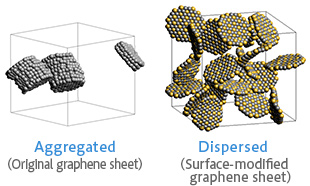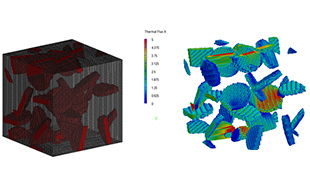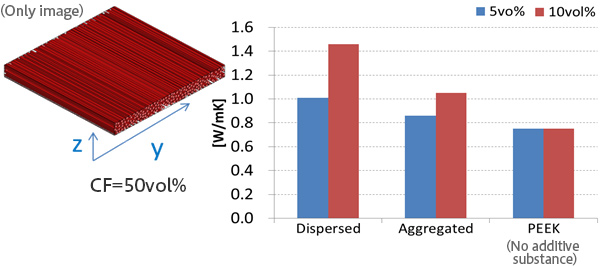Thermal analysis which considers the dispersibility of graphene sheets
- Evaluation of graphene dispersion structures
- Thermal conductivity analysis using Finite Element Method
- Evaluation of overall thermal conductivity of CFRTP using equivalent inclusion theory
Prediction of graphene dispersion structures
Dissipative Particle Dynamics (DPD) simulation of graphene sheet dispersion in a PEEK matrix is shown, with surface modification effects on dispersion evaluated.

Thermal conductivity analysis using Finite Element Method
The graphene sheet arrangement coordinates calculated in the previous step were used as input values for Digimat-FE to create a mesh structure, and thermal conductivity performance was evaluated using the Digimat-FE Finite Element Method (FEM) solver. The dispersed graphene structure exhibited higher thermal conductivity.

Thermal conductivity evaluation of CFRTP as a whole using the equivalent inclusion theory
Using the equivalent inclusion theory in Digimat-MF, the average thermal conductivity perpendicular to fiber orientation was calculated for CFRTP UD materials. The matrix component thermal conductivity was taken from homogenized properties obtained from previous finite element analysis results. It was confirmed that differences in nanoscale filler dispersion structures in the matrix affect overall thermal conductivity.






